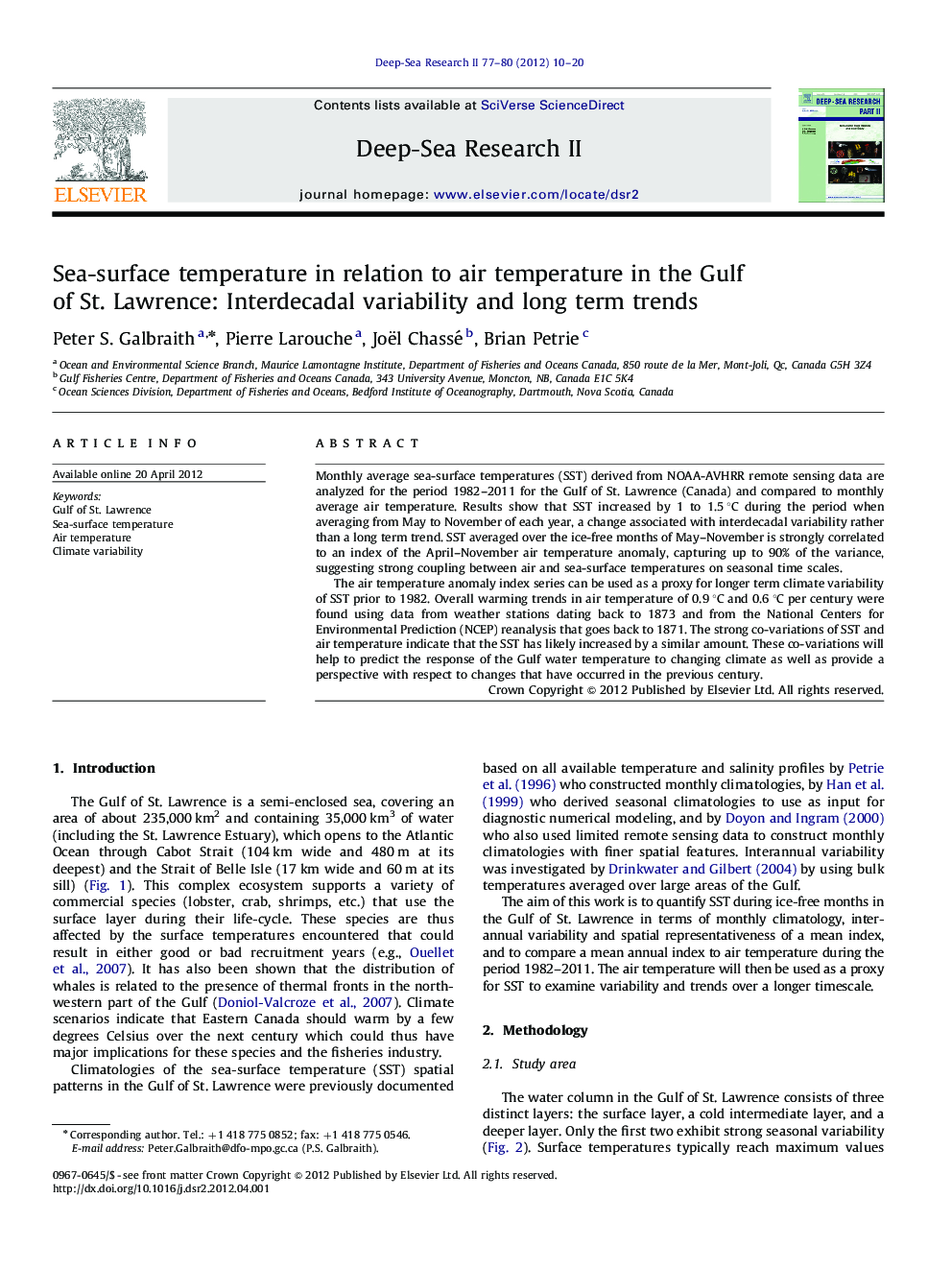| Article ID | Journal | Published Year | Pages | File Type |
|---|---|---|---|---|
| 4536695 | Deep Sea Research Part II: Topical Studies in Oceanography | 2012 | 11 Pages |
Monthly average sea-surface temperatures (SST) derived from NOAA-AVHRR remote sensing data are analyzed for the period 1982–2011 for the Gulf of St. Lawrence (Canada) and compared to monthly average air temperature. Results show that SST increased by 1 to 1.5 °C during the period when averaging from May to November of each year, a change associated with interdecadal variability rather than a long term trend. SST averaged over the ice-free months of May–November is strongly correlated to an index of the April–November air temperature anomaly, capturing up to 90% of the variance, suggesting strong coupling between air and sea-surface temperatures on seasonal time scales.The air temperature anomaly index series can be used as a proxy for longer term climate variability of SST prior to 1982. Overall warming trends in air temperature of 0.9 °C and 0.6 °C per century were found using data from weather stations dating back to 1873 and from the National Centers for Environmental Prediction (NCEP) reanalysis that goes back to 1871. The strong co-variations of SST and air temperature indicate that the SST has likely increased by a similar amount. These co-variations will help to predict the response of the Gulf water temperature to changing climate as well as provide a perspective with respect to changes that have occurred in the previous century.
